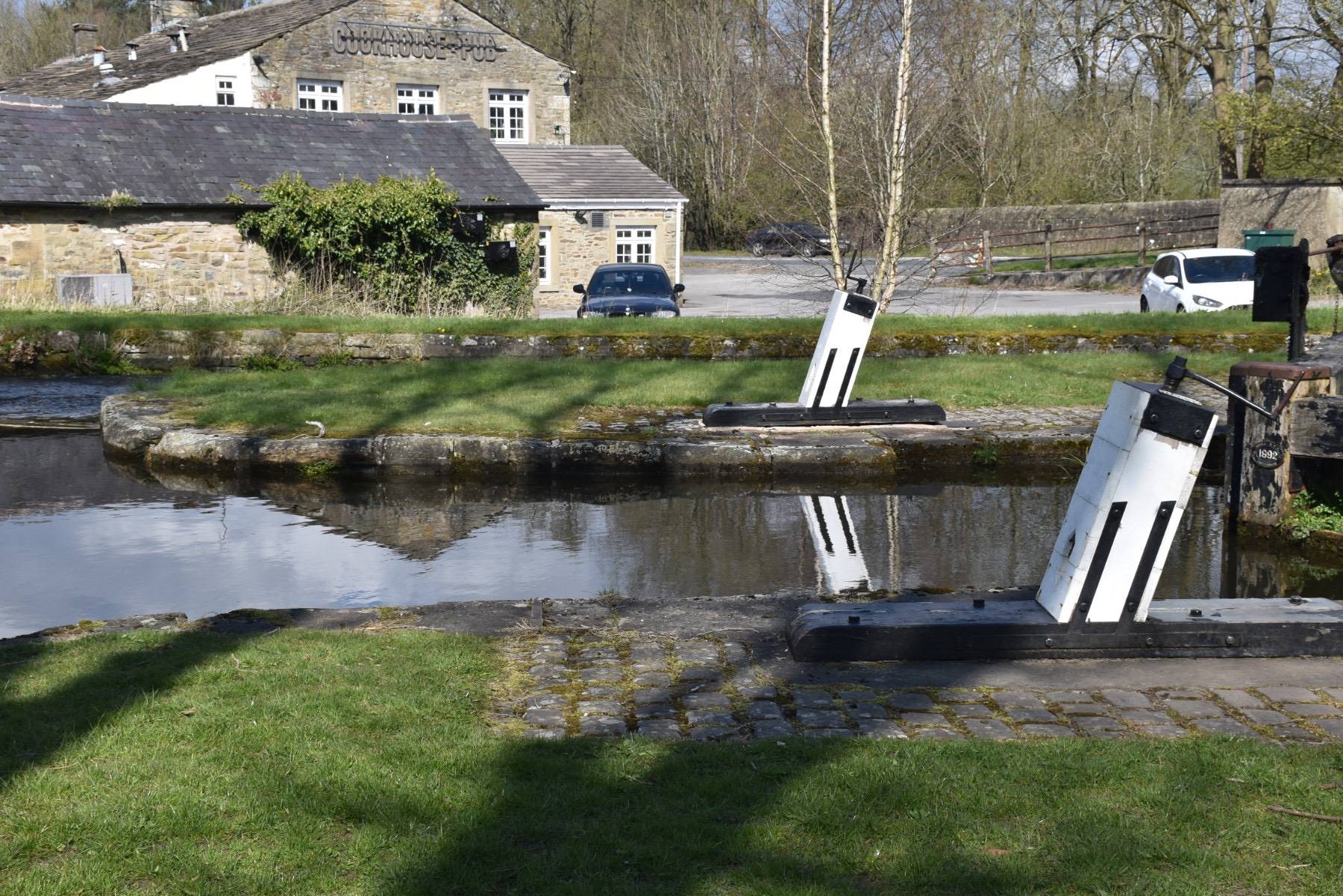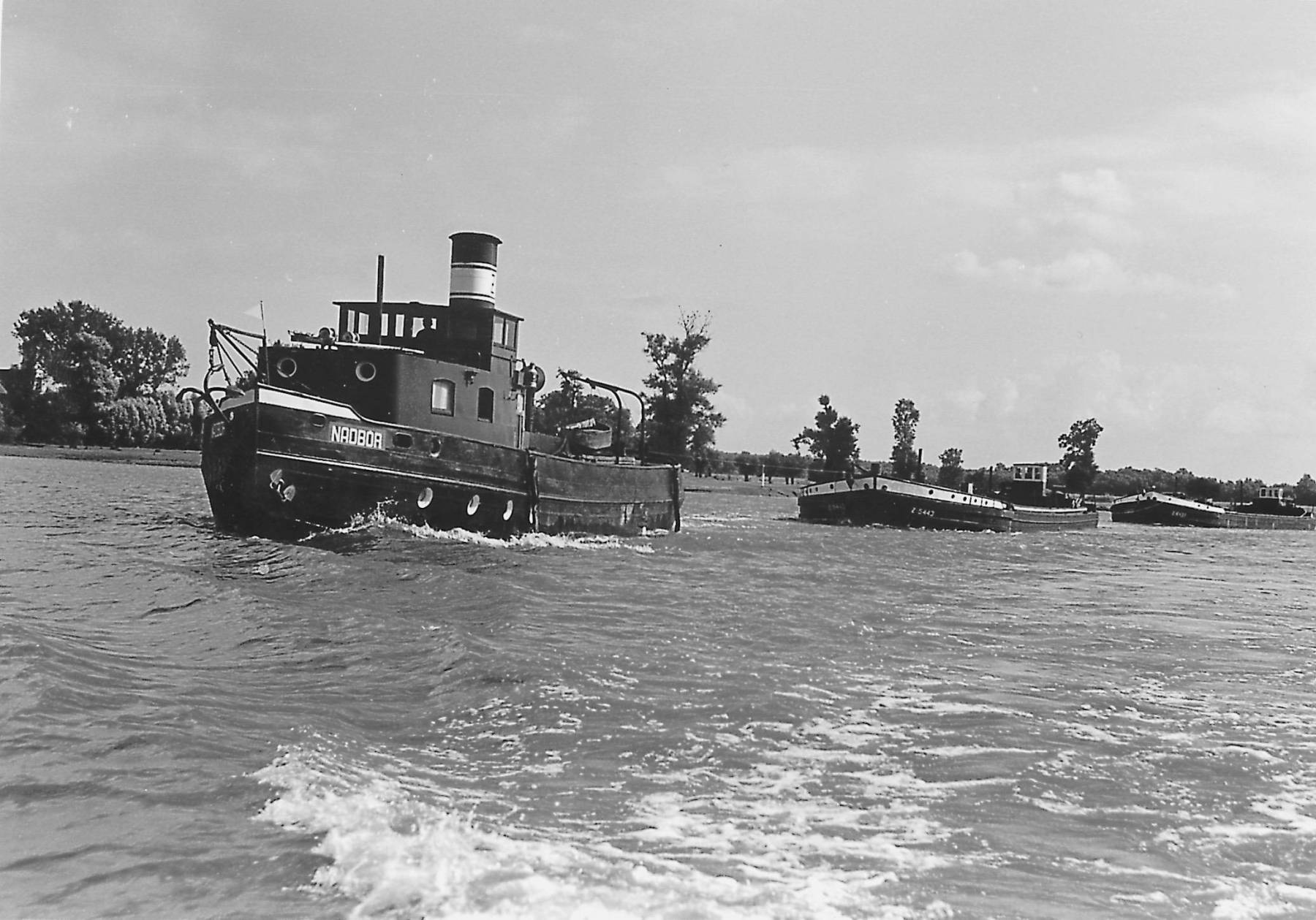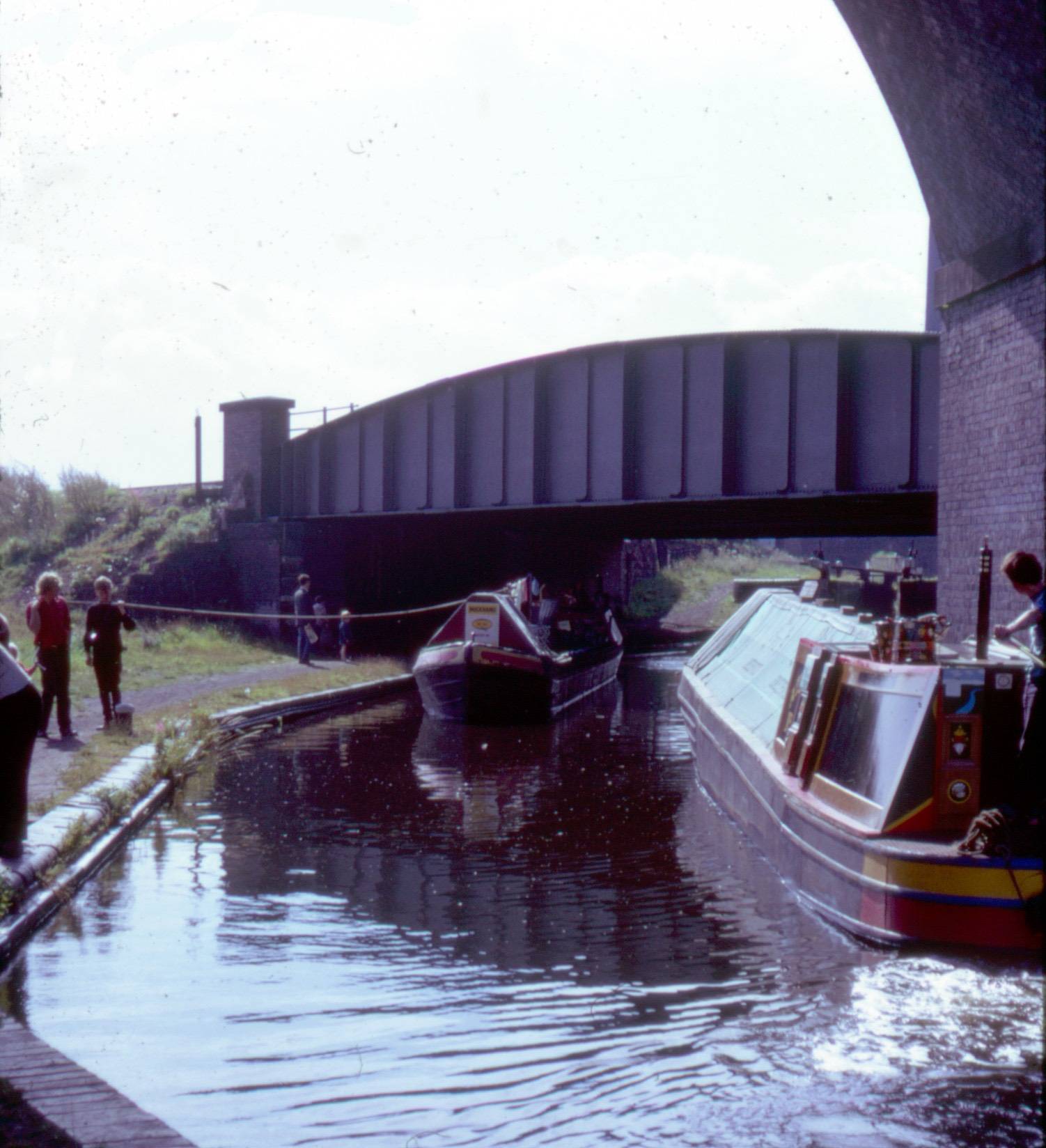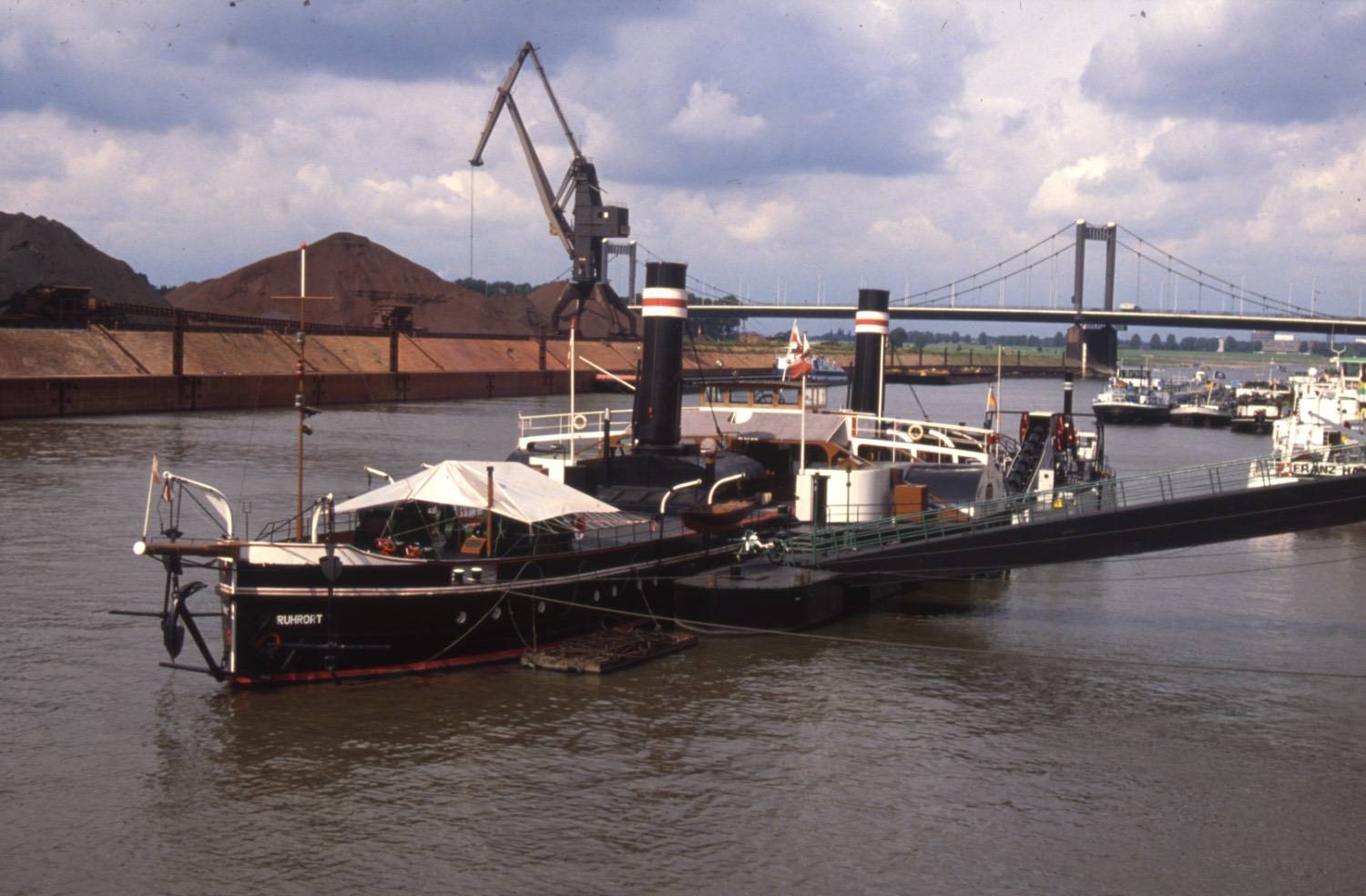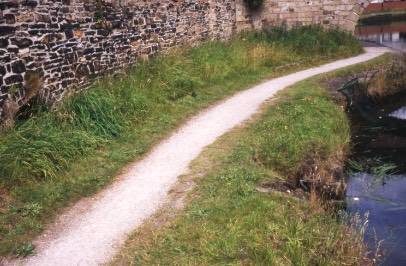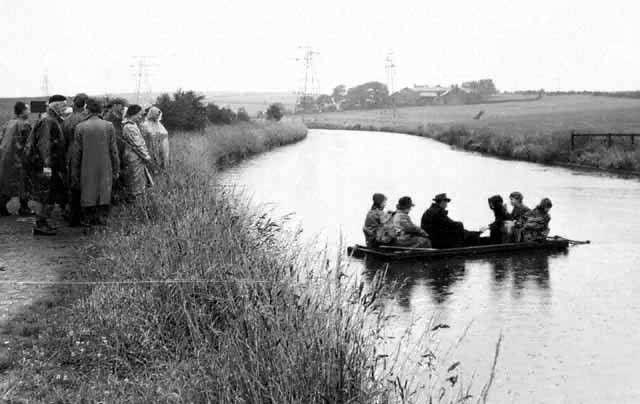-
Posts
4,245 -
Joined
-
Last visited
-
Days Won
2
Content Type
Profiles
Forums
Events
Gallery
Blogs
Store
Everything posted by Pluto
-
-
There are some on the L&LC, the photo being of Anchor Lock, Gargrave. I suspect they were all installed in the 1820s or 1830s, as one lock at Barrowford does have a date stone in the chamber wall. They could have been seen as an improvement on vertical paddles, but were more expensive to maintain.
-
Sloping paddles are illustrated in Maillard's book on canal building. His designs were based on visiting English canals in 1795. Sloping the paddles could ensure that the seal will be better over time as the paddle will not leave the wooden runners and so less likely for rubbish to interfere with the seal.
-
-

boathorse feed bucket - any ideas about this one?
Pluto replied to davidwheeler's topic in History & Heritage
I did come across this gentleman using a horse for removing timber from a forest in Slovakia. On nose-tins, a L&LC boatman told me they used them at locks as eating gave the horse something to do while the boat was in the lock. -

Does anyone have an interest in Czech steam tugs?
Pluto replied to davidwheeler's topic in History & Heritage
Returning to stern wheelers, they were used on the Oder, the pre-war ones being German-built. After the war, the Dutch built small and large tugs to help Poland recover. The small one pictured here is now preserved at Wroclaw. The photos were taken by the controller of the river traffic post-war, and he had a good eye for a picture, with a number of the families on the towed barges. -
-

Does anyone have an interest in Czech steam tugs?
Pluto replied to davidwheeler's topic in History & Heritage
Lauserne was to be one terminus of Canal d'Entrerouches, the other being at Yverdon. The construction of the canal began in 1638, and by 1648 it had reached Cossonay, where a basin was built with the wharf house seen below, with the canal route identified by the road. The canal did operate fairly successfully by carrying wine and salt, though never in large quantities, and it was abandoned in 1829. -
-

Does anyone have an interest in Czech steam tugs?
Pluto replied to davidwheeler's topic in History & Heritage
Back in 1964, before being interested in canals, I volunteered on the Welshpool & Llanfair Rly, and we were invited to the re-naming of two locos on the Zillertal Rly. On the way, we visited the Chiemsee, where the way from the railways station to the quay was by a narrow-gauge railway. Here are photos of the railway, and the paddle-steamer Ludwig Fessel. I revisited in 2019, and the Ludwig Fessler was still in operation, as was the railway. -

Does anyone have an interest in Czech steam tugs?
Pluto replied to davidwheeler's topic in History & Heritage
They were in operation on Czech waterways until about twenty-five years ago. One is preserved in the Berlin Harbour Museum, but it proved a little difficult to photograph, so this is the stern in 1996. You can just make out that there is a port and starboard wheel cover, so steering could have been by varying wheel rotation or speed. There is a rudder as well. The second photo shows one working on the Elbe at Dresden, photo from https://www.der-lustige-modellbauer.com/t29821-heckrad-dampfer-friedrich-der-bn-alles-unbekannt -
An interesting article on the BP tanker barges operating on the Danube: https://en.wikipedia.org/wiki/British_Tanker_Company
-

Does anyone have an interest in Czech steam tugs?
Pluto replied to davidwheeler's topic in History & Heritage
From the passenger steamers, Goethe still survived in service until recently. There are at least two steam paddle tugs, The Oskar Huber at Ruhrort, and the Danube tug Ruthof/Érsekcsanád at Regensburg. I did see the sailing barge natch on the Muggelss, near Berlin, in 1997, but this seems no longer to take place. -

Does anyone have an interest in Czech steam tugs?
Pluto replied to davidwheeler's topic in History & Heritage
You have to get use to the larger barges in Easter Europe, which usually had a covered steering location, which looked a little like a motor boat. They are quite difficult to photograph from the bank or boat. The first picture is of a tow of four barges passing Budapest, the second of a single tug and barge in the comparatively new lock at Gabcikovo. I suspect you could almost get a narrowboat in sideways. -

Does anyone have an interest in Czech steam tugs?
Pluto replied to davidwheeler's topic in History & Heritage
Can't add much, but I think the area around Usti nad Labe has coal mines. I did visit a power station on the Labe north of Prague in 1995 which had coal delivered by push-tow units. There is a museum, https://www.idecin.cz/en/decin-museum, which has displaysn on the Labe shipping. When I visited the area in 1996, there was a variety of push-tow and motorised boats. The photo shows the border at Hrendsko, where boats stop to get customs inspections. I was fortunate to see the last towed boats on the Danube in 1995, which were Ukranian, IIRC. -
I'm knackered, so haven't run anywhere for years!
-
You need to move back to the north. We booked two to night offers at the railway hotel in Inverness, travelled up by train via the Settle & Carlisle, then visited Wick and Kyle by train, trips I would recommend, and had one day in Inverness - the archive has all the Caledonian Canal papers and drawings. The return train, circa 10am from Inverness, gets very busy.
-
Matty's boats in 1969, photo Roger Lorenz. The second photo shows the tar loading bay at Church on the L&LC. The tar was delivered by a pipeline through the stone arch on the left.
-
I used a keb for clearing the sill, and for lifting the planks as they rose towards the surface. You could separate the top plank from those under sufficiently to pass ropes around it easily at either end. These were then used for lifting the plank clear. For replacing the planks, the corners between groove and sill were cleared by reversing the keb and using the end of the handle.
-
You should have given them the notes below so they knew where they ought to be: RAIL844/243 pp44-45 Gent. Both ends of your Canal is Navigable & the Trade is again commenced. The principal repairs which have been done during the dry season are as follows, viz: Stop Gates built on the Lancaster Level. 1st Double pointed Gates at Park Bridge near Galgate Embk. 2 Single Grove & Sill at Garstang Road Bridge near Wyre do. 3 do………do………near Ray Lane Bridge. 4 Single pointed Gates with Sill & Grove at Swillbrook Bridge. 5 Single Sill & Grove at Smith’s Swivel Bridge, Salwick. 6 Double pointed Gates in the Deep Cutting near Preston. Stop Gates built & repaired on the South Level. 1 Single Sill & Grove put in at Moss Lane Bridge, nr Johnson’s Hillock. 2 Single falling Stop Gate taken out & repaired, Sill & pile planking put in at Swivel Bridge South of Cross Hall Embankment. 3 Double falling Stop Gates taken out & repaired, Sill & pile planking put in & the walls made water tight at Limbrick Swivel Bridge. 4 Single falling Stop Gate taken out & repaired, Sill & pile planking put in & side wall made water tight at Goodmans Bridge, South of the Douglas Valley. 5 Double falling Stop Gates taken out & repaired, Sill & pile planking put in, the walls cut thro’ & made water tight in Mr Johnson’s Land South of Hollingshead Valley. 6 Double falling Stop Gates Taken out & repaired, the Sill & pile secured, the wall cut thro’ & made water tight at Red Rock Best regards. 7 Single falling Stop Gate taken out & repaired, the Sill & pile planking secured, the wall cut thro’ & made water tight at Geo. Gibson’s near the Cannel Hollows in Haigh. From Preston to Sidgreaves Lane all the Embankments have been sodded in the inside to secure the slopes & in several places where the Banks have been too low Earth has been Boated to raise the same to carry 6 feet 9 inches water, & I beg leave to recommend to the Committee to have all the Embankments where they are too low raised so high as to make the depth of water about 5 feet 6 inches in the North End. The Trade on both ends of your Canal has suffered very much by the Canal being dry, & if a Frost should set in early in the winter it will be a considerable loss, both to the Canal Co. & the public; it would be therefore a matter of great importance to the concern if the Canal could be by any means kept open. Perhaps it may be an object which deserves the most serious consideration of the Committee. Ice Boats are the only means, & I think it necessary that one should be built on the South Level without loss of time. The plans with the books of refference for making the Reservoirs on Docker & Hutton Roof Commons has duly been deposited at the Offices of the Clerk of the Peace for the Counties of Lancashire & Westmorland. I am Gent., your most Obt. Hbl. Servt, Wm. Cartwright. Lancaster, 3rd October 1800
-
The first image is from a carpenters notebook on the L&LC, giving the dimensions of the stop planks for the bridges and locks on the Yorkshire area. The second shows the stop planks being removed from the entrance to the drydock at Burscough. I used this on several occasions, and my boat is in the background, waiting to tow Scorpio back to Crabtree Lane. Some stop planks had a steel rod through them about a foot from the end which could be used for lifting. I seem to remember different types of lifting aids like this on other canals. Stop planks were often set on fire, so sets were kept at maintenance yards for use as required. However, the variation in length, as in the notebook, meant that too many sets needed to be provided, so movable temporary dams are now used instead, with one dam suitable for all sites.
-
Sorry, I didn't have my eyes open. BEngo's post should make it clearer for those at the tail of a lock. They coulsd also be floated in on a punt, something every boat and maintenance yard would have. The photo, from Blackburn Library's collection, shows Whitebirk boatyard's punt being used for ferrying a group 'Beating the Bounds' of Blackburn in the 1950s. It is surprising the weight a small punt will carry.
-
You manhandle the end of the gang plank from the towpath so that it fits into one side of the recess, with a second plank then fitted into the other side of the recess, with the stop planks dropped into the s;lot between the two walkway planks. It is pretty easy work on a narrow canal, but a little bit harder on a wide one.
-
-
If there was a breach, stop planks would be dropped in at the nearest bridgehole. They would be difficult to insert due to the flow of water, so would not have sat properly. However, they would slow the flow enough so that a further set could be inserted easily at the next bridgehole with slots.





